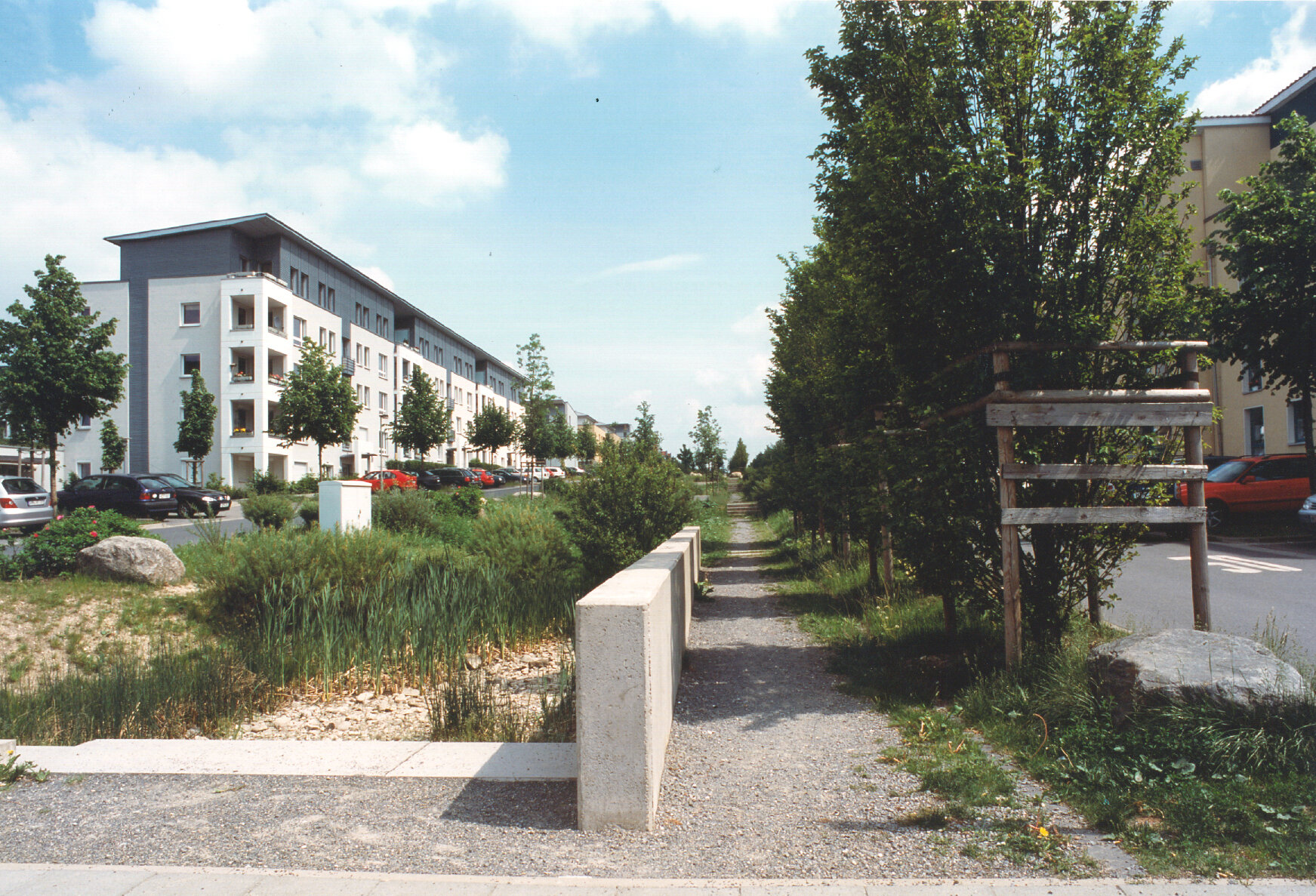
Man - Nature - Technology
Considerable attention was given to the Kronsberg, both before and after Expo 2000. However, once the bulldozers have completed their work, it might only be the nearby residents who explore this 43-meter hill. This would be unfortunate. Despite other aspects, the Kronsberg development was showcased as an exhibit off the main World Fair site, marketed and implemented under the theme 'Man – Nature – Technology' as a model ecological project. It is acknowledged that not all challenges associated with this endeavor were successfully addressed in every aspect.
The Kronsberg project garnered attention as a prominent component of the Hannover EXPO initiative known as "Ecological Optimization Kronsberg." This comprehensive project stands as a testament to the commitment to advancing sustainable urban development. The landscape design, in particular, serves as a noteworthy illustration of this dedication, showcasing an innovative stormwater concept that not only addresses environmental concerns but also aligns with the overarching goal of fostering ecologically responsible urban spaces. The integration of such forward-thinking approaches highlights the Kronsberg project as a valuable model for environmentally conscious and sustainable urban development practices.
Atelier Dreiseitl
Water-Sensitive Urban Design and Parks
This project was originally produced by Atelier Dreiseitl under the leadership of Herbert Dreiseitl. Since its merger in the year 2013 with the Ramboll Group A/S this project and the copyright is owned by Ramboll.
Location
Hannover, Germany
Client
City of Hannover
Timeline
Design: 1994 - 1999
Construction: 1999 - 2000
Site Area
Masterplan 130 ha / 320 acres
Stormwater Park 6.5 ha
Status
Completed
The core of this open system involves on-site infiltration and retention. Swales, with sub-surface storage capacity and reduced outflow detention channels, act as conveyance elements that carry stormwater to the site’s main collection areas through the new urban development.

All rainwater that isn’t infiltrated directly on site is collected in swales and ultimately drains into nine retention ponds. These ponds are specifically designed as part of the recreational open space where the fluctuation of water levels serve as an appealing feature to attract users closer to the natural environment.
It is evident that the integration of stormwater management ad open space system in Kronsberg is absolutely possible. Additionally, The simulation of natural infiltration is contributing to flood prevention. Although the new site is only 20% permeable, the local aquifer recharge is equivalent before construction.






